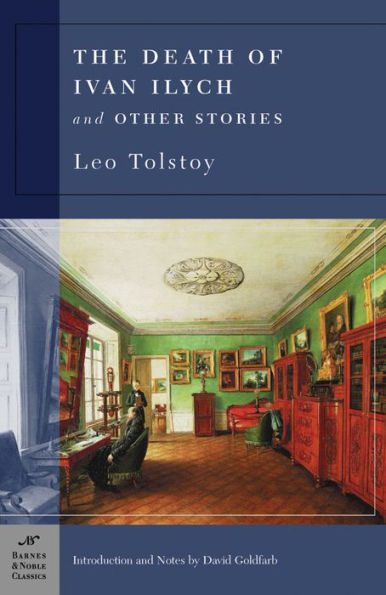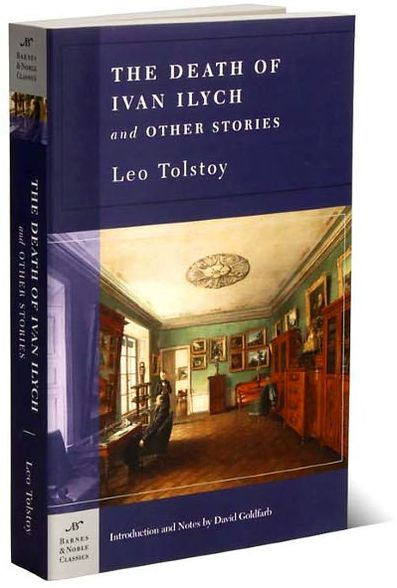- New introductions commissioned from today's top writers and scholars
- Biographies of the authors
- Chronologies of contemporary historical, biographical, and cultural events
- Footnotes and endnotes
- Selective discussions of imitations, parodies, poems, books, plays, paintings, operas, statuary, and films inspired by the work
- Comments by other famous authors
- Study questions to challenge the reader's viewpoints and expectations
- Bibliographies for further reading
- Indices & Glossaries, when appropriate
Chief among Tolstoy’s shorter works is The Death of Ivan Ilych, a masterful meditation on the act of dying. The first major fictional work published by Tolstoy after a mid-life psychological crisis, this novella reflects the author’s struggle to find meaning in life, a challenge Tolstoy resolved by developing a religious philosophy based on brotherly love, mutual support, and charity. These guiding principles are the dominant moral themes in The Death of Ivan Ilych, an account of the spiritual conversion of a judge—an ordinary, unthinking, vulgar man—in the face of his terrible fear about death.
Also included in this volume are Family Happiness, an early work that traces the arc of a marriage; The Kreutzer Sonata, a frank tale of sexual love that shocked readers when it first appeared; and Hadji Murád, Tolstoy’s final masterpiece about power politics, intrigue, and colonial conquest.
David Goldfarb teaches Polish, Russian, and Comparative Literature at Barnard College and Columbia University. He has written about Witold Gombrowicz, Bruno Schulz, Zbigniew Herbert, Stanislaw Ignacy Witkiewicz, Mikhail Lermontov, and Nikolai Gogol.
- New introductions commissioned from today's top writers and scholars
- Biographies of the authors
- Chronologies of contemporary historical, biographical, and cultural events
- Footnotes and endnotes
- Selective discussions of imitations, parodies, poems, books, plays, paintings, operas, statuary, and films inspired by the work
- Comments by other famous authors
- Study questions to challenge the reader's viewpoints and expectations
- Bibliographies for further reading
- Indices & Glossaries, when appropriate
Chief among Tolstoy’s shorter works is The Death of Ivan Ilych, a masterful meditation on the act of dying. The first major fictional work published by Tolstoy after a mid-life psychological crisis, this novella reflects the author’s struggle to find meaning in life, a challenge Tolstoy resolved by developing a religious philosophy based on brotherly love, mutual support, and charity. These guiding principles are the dominant moral themes in The Death of Ivan Ilych, an account of the spiritual conversion of a judge—an ordinary, unthinking, vulgar man—in the face of his terrible fear about death.
Also included in this volume are Family Happiness, an early work that traces the arc of a marriage; The Kreutzer Sonata, a frank tale of sexual love that shocked readers when it first appeared; and Hadji Murád, Tolstoy’s final masterpiece about power politics, intrigue, and colonial conquest.
David Goldfarb teaches Polish, Russian, and Comparative Literature at Barnard College and Columbia University. He has written about Witold Gombrowicz, Bruno Schulz, Zbigniew Herbert, Stanislaw Ignacy Witkiewicz, Mikhail Lermontov, and Nikolai Gogol.

The Death of Ivan Ilych and Other Stories (Barnes & Noble Classics Series)
400
The Death of Ivan Ilych and Other Stories (Barnes & Noble Classics Series)
400Related collections and offers

Product Details
| ISBN-13: | 9781593080693 |
|---|---|
| Publisher: | Barnes & Noble |
| Publication date: | 01/01/2004 |
| Series: | Barnes & Noble Classics Series |
| Pages: | 400 |
| Sales rank: | 13,837 |
| Product dimensions: | 5.19(w) x 8.00(h) x 1.00(d) |
| Age Range: | 18 Years |
About the Author

Customer Reviews
Explore More Items
At first glance, Three Lives seems to be three straightforward portraits of women living in the early twentieth century. “The Good Anna” describes an exacting German house servant;
Tolstoy's passionate and iconoclastic writings—on issues of faith, immortality, freedom, violence, and morality—reflect his intellectual search for truth and a religion firmly grounded in
One of Penguin Classics's most popular translations- now also in our elegant black spine dress
Describing Tolstoy's crisis of depression and estrangement from the world, A Confession is an autobiographical work of exceptional emotional honesty. It describes his search for 'a practical religion
A vibrant translation of Tolstoy’s most important short fiction by the award-winning translators of War and Peace.
Here are eleven masterful stories from the mature author, some
This new edition presents The Grand Inquisitor together with the preceding chapter, Rebellion, and the extended reply offered by Dostoevsky in the following sections, entitled The Russian Monk. By
A seemingly well-reasoned justification of murder comes to pieces as the murderer is forced to confront the true nature of his crime.
After much thought Rodion Raskolnikov determines that certain



